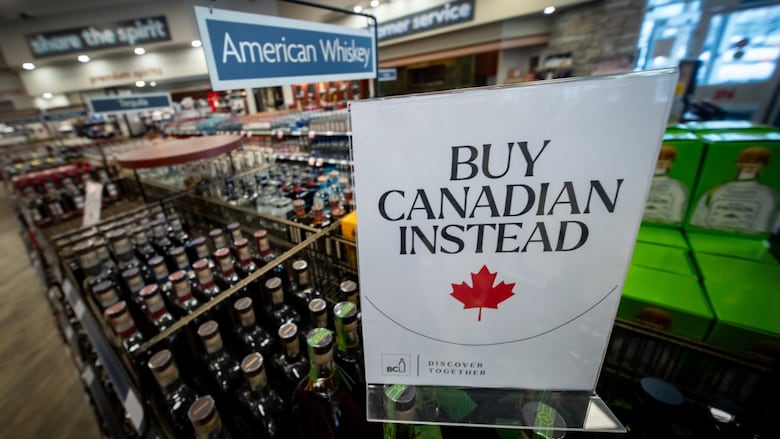Analyzing The Impact Of Tariffs On The Buy Canadian Beauty Initiative

Table of Contents
The Price Impact of Tariffs on Canadian-Made Beauty Products
Tariffs, essentially taxes on imported goods, have a direct impact on the price of Canadian-made beauty products. This price increase can significantly hinder the Buy Canadian Beauty initiative.
Increased Prices for Consumers
Tariffs increase the cost of imported ingredients and packaging, essential components for most beauty products. This leads to higher prices for Canadian-made beauty products at retail, potentially pricing them out of reach for some consumers.
- Higher manufacturing costs reduce profit margins for Canadian businesses. Increased input costs mean less profit for Canadian companies, impacting their ability to invest in research, development, and marketing.
- Consumers may opt for cheaper, imported products, even if of lower quality. The price sensitivity of consumers can lead to a shift towards cheaper alternatives, even if they are made with inferior ingredients or have less sustainable practices.
- Potential for reduced consumer demand due to higher prices. Increased prices can dampen overall demand for Canadian-made beauty products, slowing growth and potentially threatening the viability of some businesses.
Reduced Competitiveness in the Global Market
Higher production costs due to tariffs also affect Canadian beauty brands' competitiveness in the global marketplace. Exporting becomes more difficult when Canadian products are priced higher than their international counterparts.
- Loss of market share to international competitors. Higher prices make it harder for Canadian brands to compete internationally, leading to lost sales and market share.
- Reduced potential for revenue generation and job creation. Limited export opportunities hinder revenue growth and prevent the creation of new jobs within the Canadian beauty industry.
- Impact on the ability of Canadian brands to expand globally. The increased costs associated with tariffs can make expansion into new international markets a less attractive or even unattainable prospect.
The Influence of Tariffs on the Availability of Ingredients and Packaging
The Canadian beauty industry's reliance on imported ingredients and packaging materials makes it particularly vulnerable to tariff impacts.
Dependence on Imported Goods
Many Canadian beauty companies rely heavily on importing specialized ingredients and innovative packaging not readily available domestically. Tariffs on these imports directly increase production costs and can cause supply chain disruptions.
- Disruption to supply chains and production timelines. Delays in receiving imported materials can disrupt production schedules, potentially leading to missed deadlines and lost sales.
- Potential for increased costs and reduced product availability. Higher costs due to tariffs can force companies to raise prices or reduce production, resulting in limited product availability for consumers.
- Need for Canadian businesses to source locally, where possible. The impact of tariffs highlights the importance of exploring and investing in local sourcing alternatives for ingredients and packaging.
Promoting Local Sourcing Initiatives
To mitigate the negative effects of tariffs and strengthen the Buy Canadian Beauty movement, a focus on local sourcing is crucial. This involves investing in domestic suppliers and developing Canadian-made alternatives.
- Increased partnerships with Canadian suppliers of raw materials. Strengthening relationships with domestic suppliers is critical for creating a more resilient and less tariff-sensitive supply chain.
- Government support for research and development of locally-sourced ingredients. Investment in research and development can help to create new, domestically sourced ingredients that can substitute for imported alternatives.
- Investment in sustainable and ethical local sourcing practices. This will enhance the environmental and social responsibility of the Buy Canadian Beauty initiative, appealing to environmentally conscious consumers.
The Role of Government Policy in Supporting the Buy Canadian Beauty Initiative
Government policies play a crucial role in navigating the challenges posed by tariffs and supporting the Buy Canadian Beauty initiative.
Tariff Adjustments and Trade Agreements
Strategic government action is needed to address the impact of tariffs. This includes negotiating favorable trade deals and adjusting tariffs on essential imports.
- Advocating for reduced tariffs on essential imported ingredients. Negotiating reduced tariffs on critical ingredients that lack Canadian alternatives is essential for maintaining affordability and competitiveness.
- Exploring trade agreements that benefit the Canadian beauty industry. Trade agreements that provide preferential access to markets or reduce tariffs on Canadian beauty products can boost exports and revenue.
- Government incentives to encourage the use of Canadian-made ingredients. Incentivizing the use of domestic ingredients can encourage innovation and reduce reliance on imports.
Support for Canadian Beauty Businesses
Government support programs and initiatives are vital for bolstering the Canadian beauty industry and mitigating the negative effects of tariffs.
- Funding for research and development of new products and technologies. Investing in research and development allows Canadian companies to innovate, create unique products, and reduce reliance on imported components.
- Financial assistance to help businesses adapt to tariff changes. Financial aid can help businesses navigate the challenges of increased input costs and maintain competitiveness.
- Marketing and promotional campaigns to support the Buy Canadian Beauty initiative. Government-led marketing campaigns can increase consumer awareness and preference for Canadian-made beauty products.
Conclusion
Tariffs significantly impact the Buy Canadian Beauty initiative, affecting the price, availability, and competitiveness of Canadian-made beauty products. While tariffs can offer some protection to domestic industries, their negative consequences on cost and supply chains require careful consideration and strategic action. By promoting local sourcing, implementing strategic government policies, and fostering innovation, Canada can strengthen its domestic beauty industry and achieve the goals of the Buy Canadian Beauty movement. To truly support this initiative, consumers and businesses must work together to prioritize Canadian-made beauty products and advocate for policies that foster its growth. Let's actively support the Buy Canadian Beauty initiative and contribute to a thriving Canadian beauty sector. Choose Canadian-made; choose Buy Canadian Beauty!

Featured Posts
-
 Bbc Adapting Agatha Christies Endless Night For Tv Series
May 20, 2025
Bbc Adapting Agatha Christies Endless Night For Tv Series
May 20, 2025 -
 The Future Of Factory Jobs In America Addressing Trumps Promises
May 20, 2025
The Future Of Factory Jobs In America Addressing Trumps Promises
May 20, 2025 -
 The Inside Story How Michael Strahan Secured A High Profile Interview During A Ratings War
May 20, 2025
The Inside Story How Michael Strahan Secured A High Profile Interview During A Ratings War
May 20, 2025 -
 Tadic O Daytonskom Sporazumu Nesvjesnost Sarajeva I Potencijalni Gubici
May 20, 2025
Tadic O Daytonskom Sporazumu Nesvjesnost Sarajeva I Potencijalni Gubici
May 20, 2025 -
 Nyt Mini Crossword Answers For March 8 2024
May 20, 2025
Nyt Mini Crossword Answers For March 8 2024
May 20, 2025
